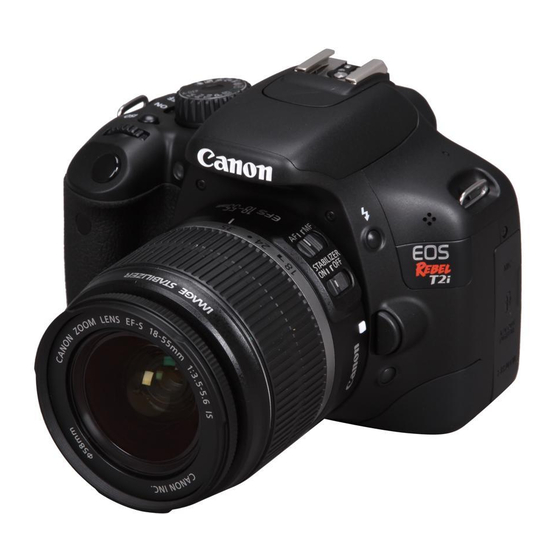
Canon Rebel T2i Quick Start Manual
For video recording
Hide thumbs
Also See for Rebel T2i:
- Instruction manual (114 pages) ,
- Brochure (39 pages) ,
- Quick sheet (4 pages)
Table of Contents
Advertisement
Advertisement
Table of Contents

















Need help?
Do you have a question about the Rebel T2i and is the answer not in the manual?
Questions and answers